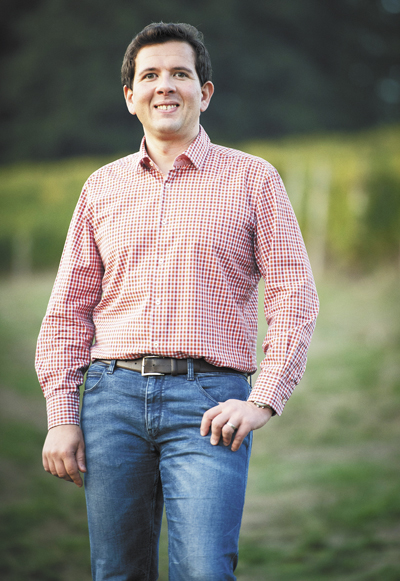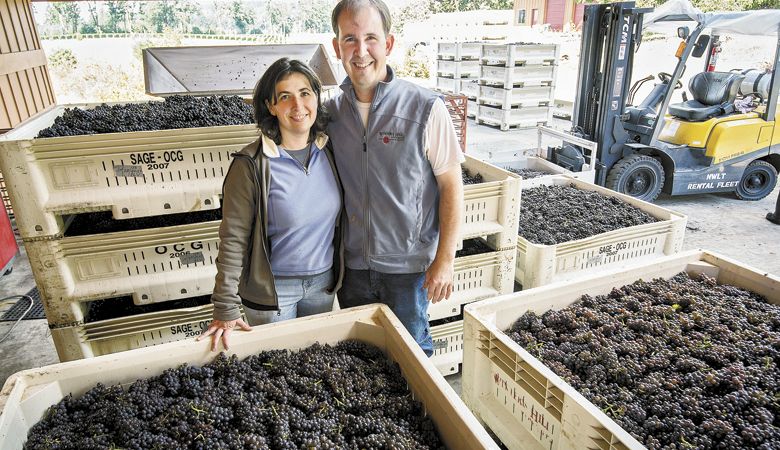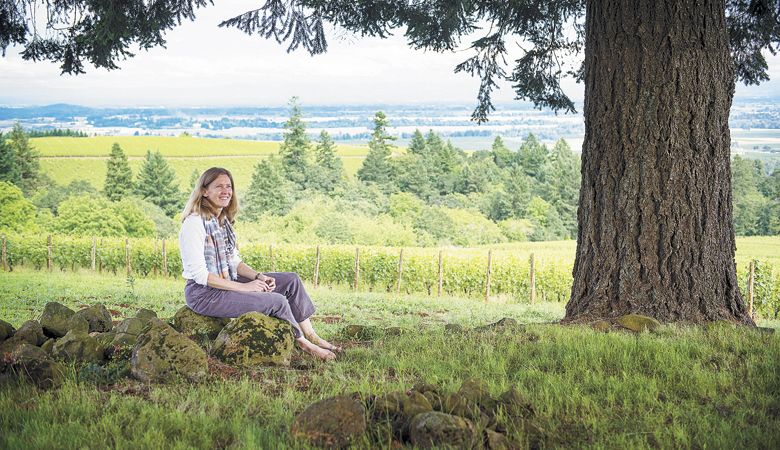Perle of the Willamette
Comparing Oregon’s Dundee Hills to Burgundy’s Vosne-Romanée
For Pinot lovers, Burgundy rides high, a lodestar around which all other wine regions orbit. Within that constellation, Vosne-Romanée shines among the brightest. Deemed the “central pearl in Bourgogne’s necklace” by 19th century French wine author Gaston Roupnel, the village of Vosne-Romanée glints with some of Burgundy’s most celebrated Grand Crus, including Romanée-Conti, La Tâche and Richebourg.
Since the influx of Burgundian vignerons to Oregon, starting with Domaine Drouhin in the late 1980s, comparisons between these two wine regions occur with increasing regularity. And while such correlations exasperate some, most agree that Oregon, like Burgundy, contains certain sites where terroir gleams greatest. To many, the Dundee Hills AVA (American Viticultural Area) earns its place as Oregon’s own “pearl of the Willamette Valley.”
Terroir
“It is always difficult for me to compare our vineyards in Oregon and Burgundy because I spend so much time thinking about what makes them different and how to reveal those differences,” says Véronique Drouhin-Boss of Domaine Drouhin. “I wouldn’t say there is a stylistic connection between the Dundee Hills and Vosne-Romanée, but they are both prestigious in their own way.”
Dundee Hills, like Vosne-Romanée, includes its own iconic producers, such as Domaine Drouhin, Domaine Serene and Maison Louis Jadot. Hailed as the first region to establish vines in the Willamette Valley, the Dundee Hills lie south of the Chehalem Mountains and Ribbon Ridge, east of Yamhill-Carlton and north of Eola-Amity Hills. Unlike limestone-rich Vosne-Romanée, Dundee Hills features primarily basaltic reddish soils. Rising between 200 to 1,067 feet above sea level, more than 100 vineyards shoulder one another across nearly 2,200 acres of vines.

“Pinot Noir is all about finding those great combinations of soil and slope and exposure, and I think we really do have some great conditions here in the Dundee Hills,” says Russell Gladhart of Winter’s Hill Estate. “It’s like an island in the Valley, an island of the hills.” He comes by his perspective honestly. Gladhart’s family planted Winter’s Hill in 1990; Gladhart later met his French wife, Delphine, while both worked for Lemelson Vineyards. The couple then moved to Beaune, where Gladhart studied oenology, before returning to the family estate in Oregon.
“We have the benefits of the warmth of the Valley, but we’re up on the hills, so we have access to the wind and better soil conditions.” Gladhart explains. “I think we really do have a special spot, and it’s a fortunate combination of circumstances — of soil and slope, and then good vineyard growers and good winemakers working with those materials.”
These superior traits attract a host of Burgundians, too. “I like the expression of the minerality in Dundee Hills, the impact of the red volcanic soil — the Jory soil — on the Pinot Noir,” agrees Guillaume Large, winemaker for Résonance of Maison Louis Jadot, which owns Découverte Vineyard. “I think this Jory soil is the source of the personality of the Pinot Noir in Dundee Hills, expressing a minerality (the red color of the soil results from iron oxide), and a true elegance, with expressive wines every year,” he says. “The aromatic complexity is impressive, with a lot of red fruits and subtle spices. When the wines are young, I am often surprised by the energy that they release, due to the degradation of the volcanic rock (around 15 million years old) so unique in this location.”
Similarities
The unique characteristics of the Dundee Hills prove enticing for other prestige players as well, including former film director Francis Ford Coppola of The Family Coppola Wines portfolio. A Burgundy aficionado, Coppola purchased the former Vista Hills in 2018, rebranding it as Domaine de Broglie in 2019. Neighbors include Domaine Serene, Winter’s Hill and Domaine Drouhin.
“On one of [Francis Ford] Coppola’s first visits to the Dundee Hills, we were fortunate enough to taste with Veronique Boss-Drouhin,” says Corey Beck, CEO of The Family Coppola. “It was wonderful to hear the similarities between Burgundy and the Dundee Hills from someone who makes wine in both regions. I’ve noticed the wines of Dundee have incredible ageability — just like Vosne-Romanée — which is directly correlated to the fruit profile. The wines have amazing bright fruit coming from great acid structure and tannins that are melted and not aggressive.”
“Burgundy and Oregon don’t make the same wines, but there are some strong similarities,” adds Ian Burch, winemaker for Archery Summit, who formerly made wine for Dominique Lafon at Evening Land in Oregon and Burgundy. “Naturally, the cultural aspect of winemaking has a very strong influence in both winegrowing regions. The power of community, regularity and accessibility of wine has a very strong influence on wine style. As there becomes more dialogue between thoughtful winegrowers and winemakers between Oregon and Burgundy, I can see more similarities and synergies in winemaking form.”
Differences
Dundee Hills diverges from Vosne-Romanée in one important regard: Vosne-Romanée produces only reds. As it turns out, Dundee Hills’ cooler elevations allow for both Pinot Noir and Chardonnay to thrive.
Ironically, when Ken and Grace Evenstad founded Domaine Serene in 1989, locals warned them grapes wouldn’t ripen above 600 feet. The estate comprises sites ranging from 520 to 825 feet. “Now, they’re clearly some of our very best vineyards.” says Ryan Harris, president of Domaine Serene. “We’ve been very successful with our Chardonnay program, which is 100% Dundee Hills. In fact, we refuse to grow Chardonnay anywhere outside the Dundee Hills, because we don’t think it’s the same magical combination of high elevation, Jory volcanic soils and Dijon clones that really makes our Chardonnays special.”
Other Dundee Hills producers concur. “In 2016, we decided to plant a block of Chardonnay at Découverte Vineyard,” says Large. “It will be very interesting to discover the expression of the Chardonnay on the volcanic soil of Dundee Hills. The first vintage is in barrel now. If we know that Découverte Vineyard is a great location for Pinot Noir, maybe we will have soon the confirmation of a unique terroir for Chardonnay, too — [which] would distinguish it from Vosne-Romanée.”
Magic in a Bottle
Ultimately, Dundee Hills glimmers as the “pearl of the Willamette Valley” not simply for its unique charms, but also its community-wide drive for perfection. “We’ve been growing grapes in our vineyards for 30 years,” observes Gladhart. “But you can really see, as we continue to go, we continue to learn more about which corner of our vineyard produces the most distinctive wines. And if we’ve learned that much in 30 years, only imagine what we might learn in 500 years.”
Harris adds, “I think it’s one of those places — it may take decades or even centuries — but it will be recognized, right up there on par with the top villages in Burgundy as producing the best Pinot Noirs and Chardonnays in the world.”
“One thing I will say about the Dundee Hills,” concludes Boss-Drouhin, “The wines we can make here are lovely, elegant and age-worthy. We knew back in 1987 that there was potential, but planting each block and learning our piece of the hill, has been an amazing adventure, and we have so much more to go.”











